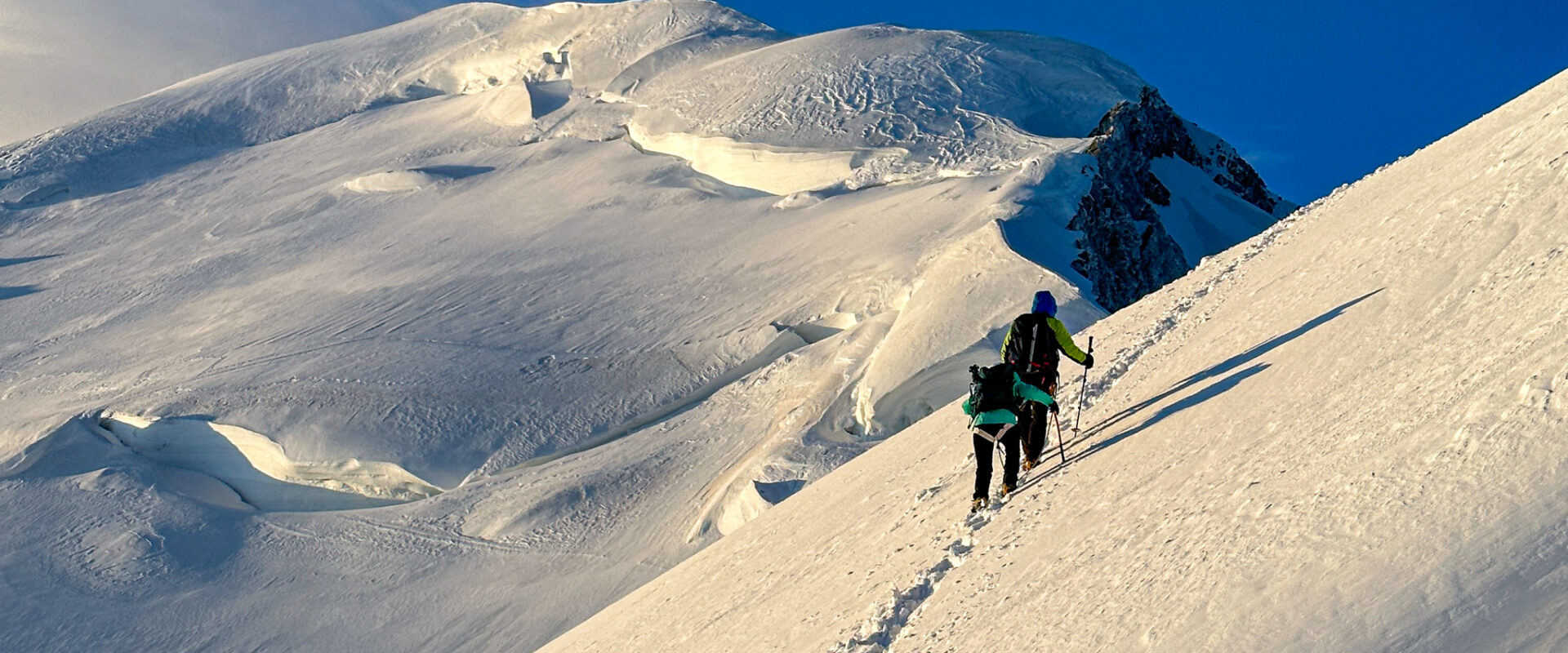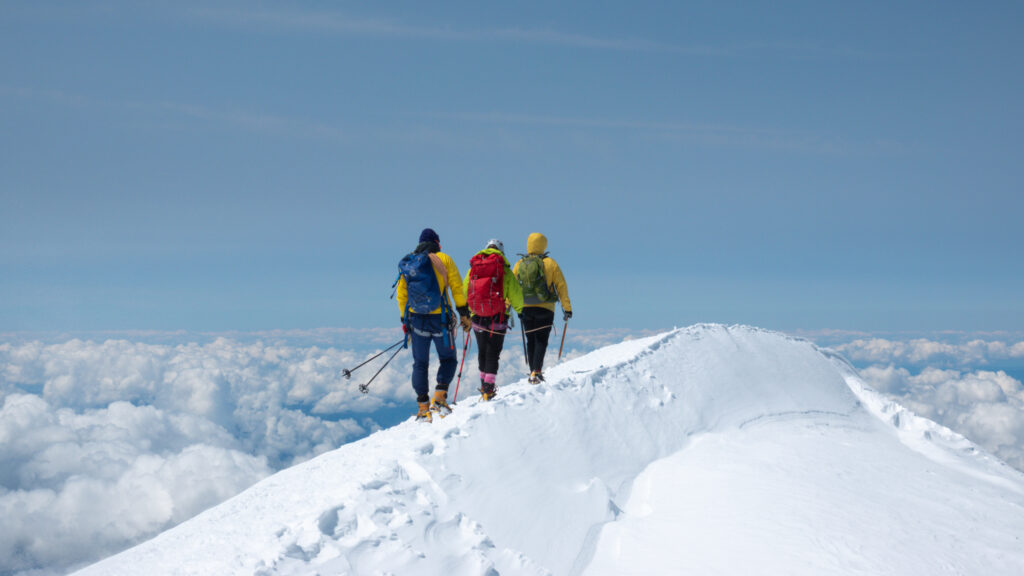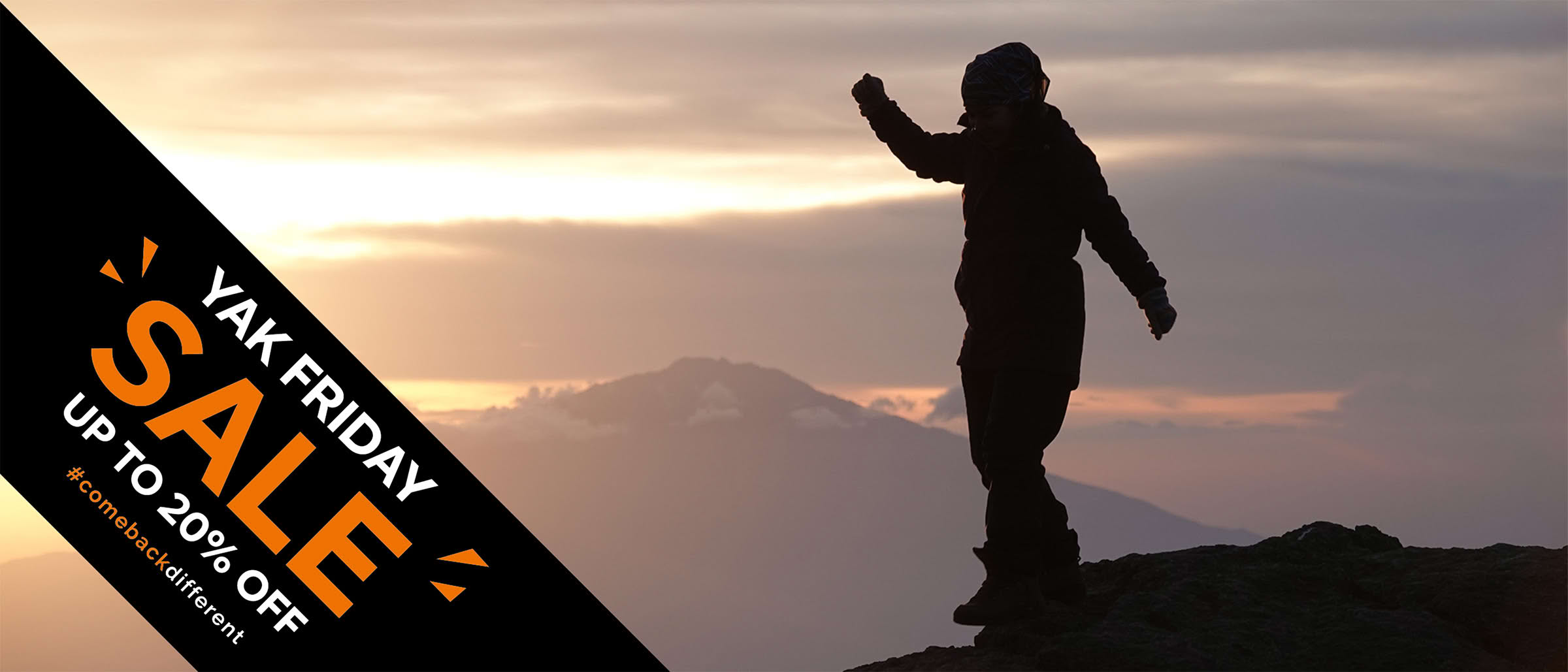BY Rami Rasamny | October 14 2025
What Is the Hardest Part of Climbing Mont Blanc?

By Rami Rasamny, Founder of Life Happens Outdoors
When people ask about the hardest part of climbing Mont Blanc, they often expect one clear answer, a single section that everyone struggles with most. But the truth is more complex. The mountain changes constantly. Conditions shift within hours, sometimes between the ascent and the descent, and each climber’s experience unfolds differently.
On the classic Gouter route, there are three sections that most often test climbers both physically and mentally: the Grand Couloir, the first of the Grand Bosses, and the final summit ridge. In most conditions, one or a combination of these will be the moment that truly challenges you.
The Grand Couloir – A Race Against Nature
Before reaching the Gouter Hut, every climber must face the Grand Couloir, a narrow gully carved into the mountain’s flank, notorious for its constant rockfall. The crossing itself is short but demands total focus. It is not the technical difficulty that makes it hard; it is the risk. The safest time to cross is early in the morning when the snow is still hard and temperatures are low enough to keep the rocks frozen in place.
In that brief minute across the gully, every decision matters. You glance up, listen for falling stones, and move swiftly, one step at a time. It is one of the few moments on the mountain where adrenaline completely takes over.
When conditions are good, when there is solid hard snow underfoot and a clear track from previous climbers, the Grand Couloir becomes much easier. It feels secure, the footing is firm, and the risk drops dramatically. But when the snow softens or rocks begin to move, the same short passage can feel like an eternity.

The First Grand Bosses – Where the Slope Bites Back
Above the Gouter Hut, or sometimes starting from the Tête Rousse Hut for those summiting directly, the first of the Grand Bosses marks the beginning of the high alpine section. The slope steepens sharply here, and while it is not overly technical, it demands endurance and confidence on exposed terrain.
Depending on your schedule, you might reach this section in the darkness before dawn or under bright morning light. Either way, it is here that the altitude begins to make itself known. Breaths shorten, steps slow, and every metre of vertical gain feels heavier than the last. The snow can be firm and supportive or soft and energy draining, and the exposure along the slope adds a mental challenge that often surprises climbers.
It is not uncommon to feel your heart rate spike as you look across the vast drop below. Staying calm and steady is key, focusing not on how far remains, but on the next step ahead.

The Summit Ridge – Narrow, Calm, and Demanding
The final approach to the top of Mont Blanc is a moment unlike any other. The summit ridge stretches out like a blade, with deep drops to either side and a view that steals whatever breath you have left. It is a place of beauty and precision, one where focus must remain absolute.
Even in calm weather, fatigue and altitude combine to make balance and coordination more difficult. When the wind picks up, the ridge demands composure and confidence. Here, the summit feels both close and impossibly far, testing every ounce of patience and control you have left.

It Is All Twice as Hard on the Way Down
What many forget is that each of these sections, the Couloir, the Bosses, and the Ridge, is done twice. The descent follows the same route, and by then, fatigue sets in. That is when mistakes happen.
Crossing the Grand Couloir again in the warmth of the afternoon can feel more intimidating than the first time. The snow may have softened, rocks may be loose, and concentration is lower. Descending the steep Grand Bosses requires careful footwork, especially when the body just wants to rest. Even the easiest sections can become difficult when tired legs meet changing snow.
That is why many experienced guides say that climbing Mont Blanc only truly ends once you are safely back at the Tête Rousse Hut.
Why the Hardest Part Keeps Changing
The Mont Blanc climb is never static. The hardest part shifts with the weather, the time of day, and your own condition. Some days it is the Grand Couloir that steals your focus; other days it is the long push over the Grand Bosses or the exposed beauty of the final ridge. In reality, it is often a combination of all three.
But that is what makes climbing Mont Blanc so transformative. It is not just about reaching the top. It is about meeting the mountain exactly as it is that day and discovering what you are capable of when it asks for everything you have got.
Ready to Take on Mont Blanc?
Join the Life Happens Outdoors Mont Blanc Summit Course and experience one of the world’s most rewarding climbs with the guidance of professional IFMGA mountain guides and dedicated LHO team leaders. From your first training step to standing on the summit, we handle every detail so that you can focus on what truly matters; the journey, the learning, and the transformation that happens in the mountains.
About The Author
Rami Rasamny is the founder of Life Happens Outdoors, a premium adventure travel community dedicated to transforming lives through curated outdoor experiences. A mountaineer and entrepreneur, Rami has led teams on some of the world’s most challenging peaks, from the Alps to the Himalayas. His mission is to make adventure accessible, transformative, and safe for all who seek to push their limits and Come Back Different.
About Life Happens Outdoors
At Life Happens Outdoors, we believe in the power of nature to transform lives. As proud members of the Adventure Travel Trade Association (ATTA) and the World Travel & Tourism Council (WTTC), our team of certified guides and outdoor professionals is committed to the highest standards of safety, sustainability, and excellence.
Discover more about our story and mission on our Meet LHO page, or explore our curated adventures such as the Tour du Mont Blanc Trek, the Climb of Kilimanjaro, and Chasing the Northern Lights.















